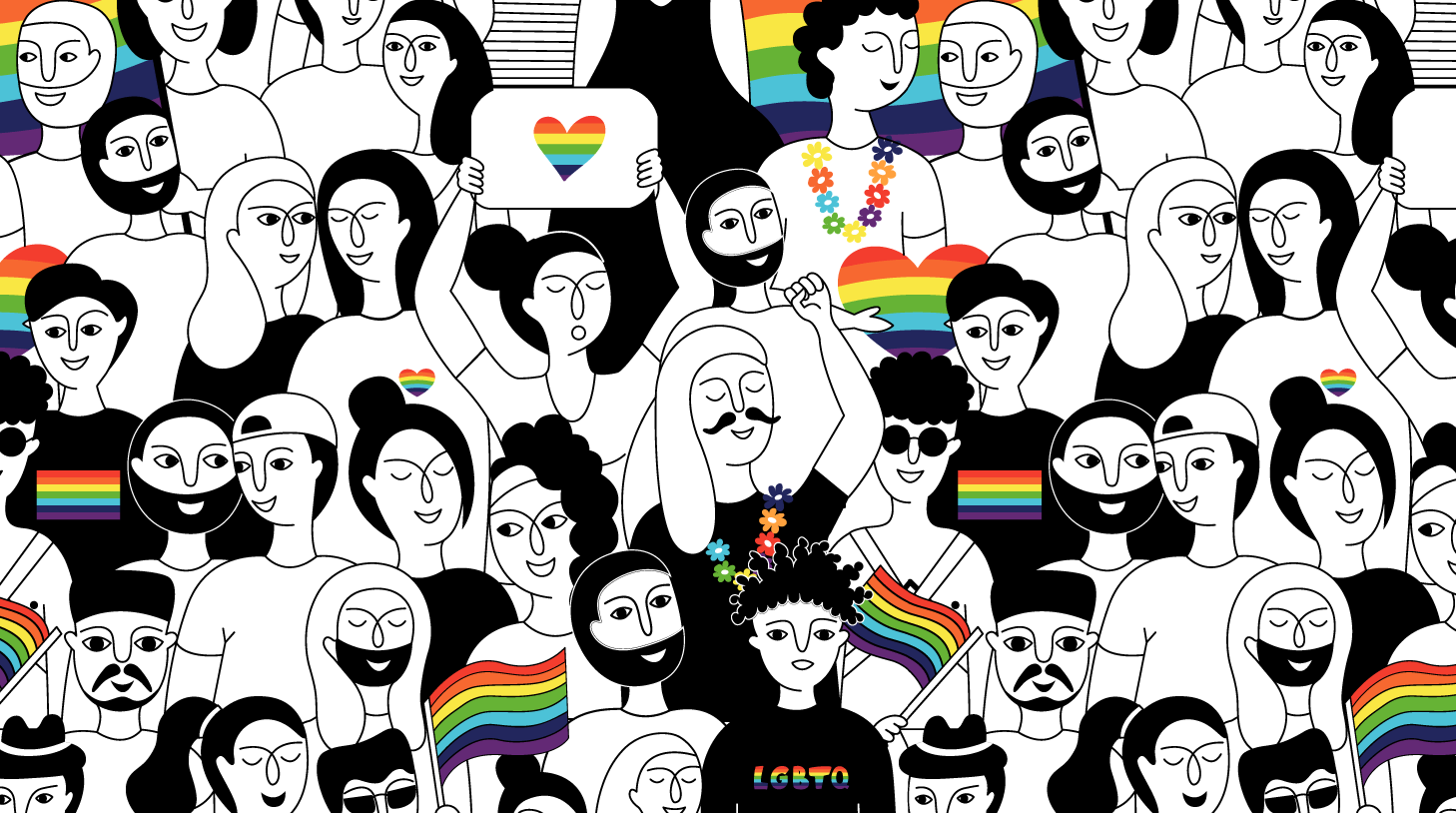5 tips on making workplaces LGBTQ inclusive
Adding a rainbow filter over your company’s logo may seem to be enough to indicate that your organization is LGBTQ inclusive. Still, outward appearances don’t always translate into daily policy and practice. For instance, tech companies that made Black Lives Matter pledges had 20% fewer black employees than their counterparts that didn’t pledge.

It’s what you do that matters, not what you say you are going to do. When you’re looking at making your workplace more LGBTQ inclusive, you need to look at your full employee lifecycle – from where you source your candidates through to how you integrate employees at all levels of the company.
Here is what you can do to foster a truly inclusive workforce in your organization.
Making workplaces LGBTQ inclusive
Let’s start by looking at the numbers. A Human Rights Campaign survey found that:
- 46% of LGBTQ workers are closeted at work
- Half of non-LGBTQ employees reported there were no openly LGBTQ employees in their company
- 1 in 5 LGBTQ workers have been told or had coworkers imply that they should dress more feminine or masculine (compared with 1 in 24 non-LGBTQ workers)
- 54% of non-LGBTQ workers said that they would be very comfortable working with an LGBTQ coworker; of those who wouldn’t be very comfortable, a majority said it was because they “didn’t want to hear about their coworker’s sex life.”
LGBTQ employees are not comfortable everywhere they work, and there are some misperceptions out there. No one wants or needs to hear about their coworker’s sex life, which shouldn’t even be an issue on the table regardless of preference.
We share five tips on how to make your workplace more LGBTQ inclusive:
1. Speak with your pocketbook, not your rainbow logo
It’s easy to change a logo, put up a flag, or tweet about happy Pride Month. But LinkedIn took a step further and started paying the heads of their affinity groups $10,000 a year for the extra work. This demonstrates their desire to support all diversity groups, including LGBTQ groups.
Nothing says real support and inclusion like cash which recognizes the hard work these employee resource group leaders put in.
2. Be thoughtful about pronouns
This is a hot button issue at work, and you need to tread carefully. For example, look at the following exchange on Twitter:
Katrina Kibben: One of my Pride wishes this year is to ban the phrase “preferred pronouns.” They are not preferred. This isn’t steak or shrimp. It’s a human’s identity.
Dr. “Coach” Dawn Reid #ReidReady: I respect how you feel and I ask if you can consider preference is about a label choice. I.e., My son is non-binary. He has a pref of they/she/he depending on his affect. It’s his pref of a social label in the moment. Not who he is as a person.
Katrina Kibben: Every experience is different. I respect it. For me? My first thought is that your child may be code-switching for their safety (I do it too), not changing pronouns.
Dr. “Coach” Dawn Reid #ReidReady: Agreed. It’s different for each person. Code switching is another topic. We all do that for communication clarity. The original term/use is from linguistics. And that’s not it for them. It’s his preference. We are talking about this now.
In other words, there is no way to get it right. An October 2020 survey by Tallo found that 88% of Gen Z candidates think it’s important for recruiters to ask them their pronouns. But many Baby Boomers and Gen Xers find it offensive to ask their pronouns. This leaves you to guess, but there are some things you can do.
Listen to what people want to do. Respect and use their pronouns. (But it’s not reasonable for an employee to expect everyone to follow regular pronoun changes.) Allow people (but don’t require) to list their pronouns on email signatures and other work-related things.
3. Don’t make assumptions
Does someone look gay? Is that person trans? Whisper, whisper, whisper. This type of thing makes for a very unwelcoming environment for everyone.
Instead, make sure your staff understands employees treat every other employee and client equally across the board. Everyone gets respect. If you allow people to bring personal items to decorate their cubicles, then everyone gets to bring a family picture – regardless of what their family looks like.
Make sure you schedule and provide promotions and perks based on performance and seniority, not the perception that so-and-so needs a bump in pay because his wife just had a baby. If an employee announces the impending birth of a baby, don’t speculate about just how that baby was conceived or carried. Instead, just say, “Congratulations! Let me get you the FMLA paperwork!”
4. Remove bias from your recruiting process.
EPM Scientific gave five tips for reducing bias in hiring. These are:
- Anonymizing resumes in the review process
- Encouraging validated pre-employment testing
- Pre-employment testing, such as work samples, predict job success.
- Encouraging a diverse interview panel and hiring committee
- Challenging bias in recruitment and hiring decisions
All these things help you ensure you hire the person who is best for the job regardless of their race, gender, religion, sexual orientation, age, or national origin. Letting candidates know you do through these processes helps them feel like they have a chance based on their skills.
5. Educate your leadership on the benefits of diversity
You can only increase LGBTQ candidates when you have a welcoming environment. But, to make a welcoming environment, senior leadership needs to be on board. Presenting the business case for making workplaces LGBTQ inclusive will help.
People who have to hide their identities at work experience more stress. Higher stress results in more days off and an increase in medical costs. It’s saving you money to have a welcoming environment.
Consulting giant McKinsey reported in May 2020 that companies with diverse leadership have higher financial returns than those that don’t. While they looked only at gender and race, it stands to reason that bringing in people with different sexual orientations would bring additional viewpoints that would help the company reach different audiences and support all employees.
Finally – candidates, especially Millennials and Gen Z, want to work for inclusive organizations and leaders. They’ve made that clear. So make sure you let them know what your company is doing to ensure everyone feels comfortable.
The critical point of all this is that everyone deserves a job based on their knowledge, skills, and abilities. Everything else should be irrelevant. This means ensuring that everyone is welcome in your company. A simple concept that goes far.




